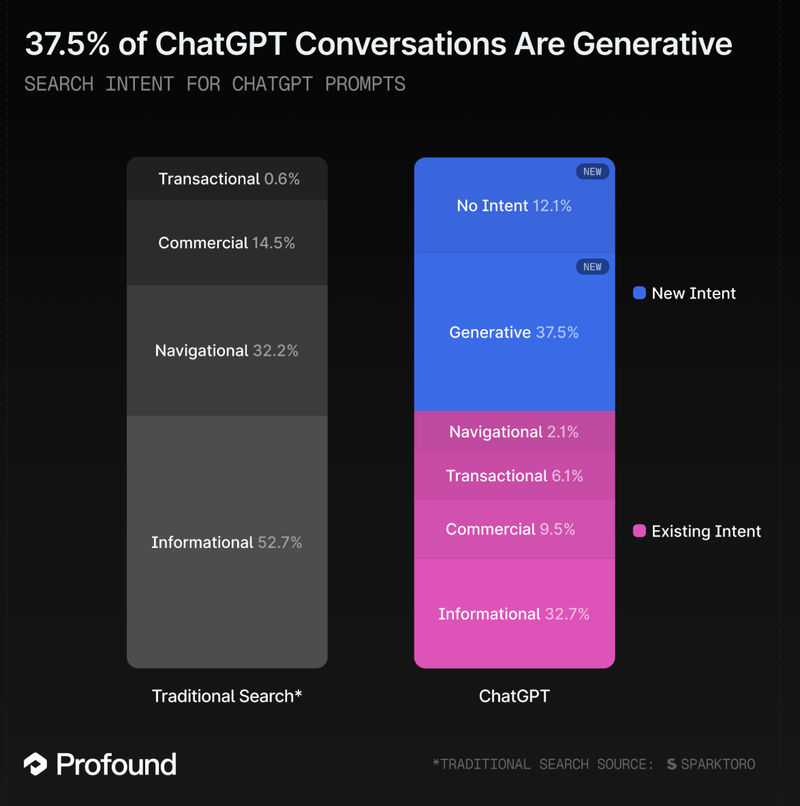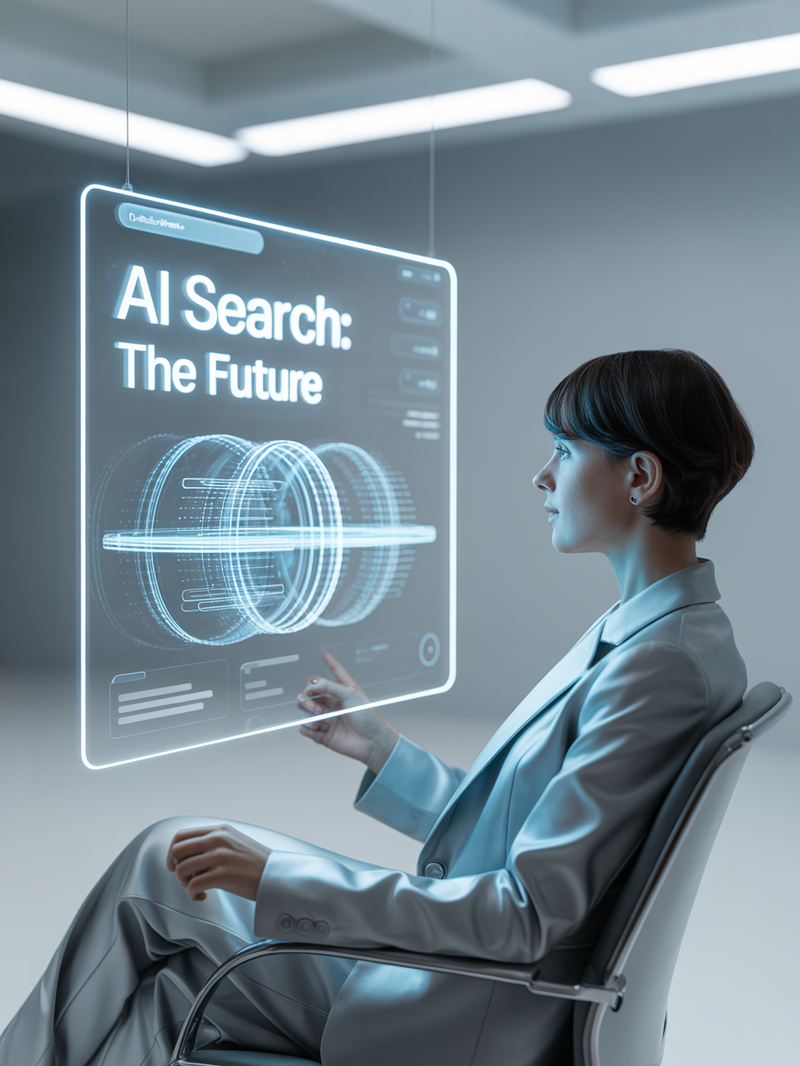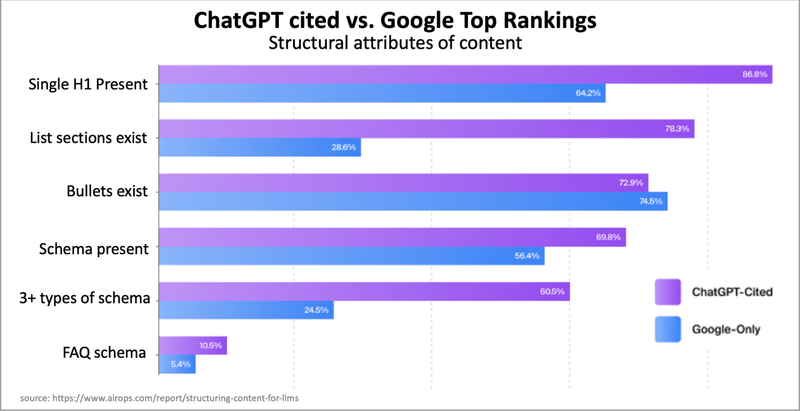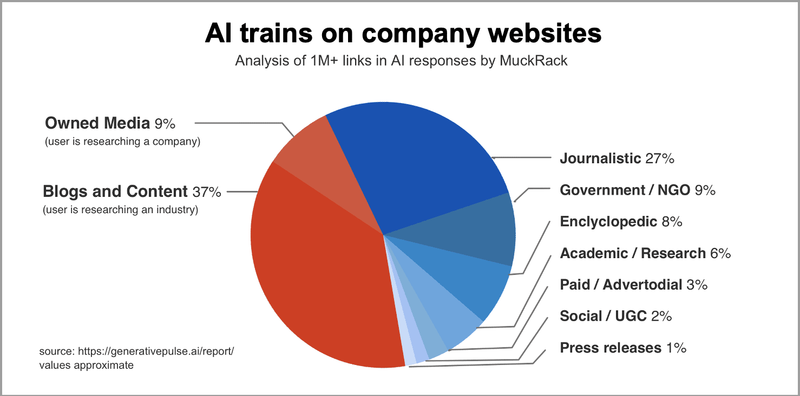
The landscape of online search and digital discovery is undergoing a transformative shift, driven by the widespread adoption of AI search tools like ChatGPT.
Traditional consumer behaviours, which prioritised discoverability, information gathering, engagement and buying is now being upended as consumers increasingly seek direct outcomes from AI search systems.
Sufficient time has now passed, allowing for strong data and research to define the following...
- How consumers are engaging with AI search today.
- Understanding where AI search is going, what does the future look like?
- What does this mean for retailers and B2B’s in the short, medium, and long term?
Generative Intent Takes the Lead
A research project analysed tens of millions of interactions in ChatGPT vs a similar volume of search behaviours occurring in Google. The study classified each interaction/search to identify how people are using both search systems.
Data from this landmark study reveals 37.5% of all interactions with ChatGPT now centre on generative intent, see Figure 1 below.

Figure 1
“Generative” intent refers to people using ChatGPT to create/generate solutions. In other words, people are becoming less likely to seek out information then navigate to new resources to learn how to do things or have needs met: which is the classic behaviour conducted on Google.
This “generative” behaviour involves people literally skipping steps and asking ChatGPT to “create X”, “draft Y”, or “do Z”. In doing so, they bypass multiple information-gathering steps and ask AI search tools to generate the outcome they are looking for.
Understanding the “Generative” Trend:
To understand the impacts of this consumer new “Generative” behavioural trend and how it’s impacting the world of online retail and B2B, we must first understand the consumer search behaviours it’s replacing.
To understand this better, we need to define the consumer search behaviours mentioned in Figure 1 above…
Navigation Search:
This is a search query where a consumer is looking to find a particular website, a brand name and a product type and the consumer intends to go directly to that known online resource: for example, “Amazon iPhone 15”.
Commercial Search:
Commercial intent refers to a consumer in the research phase of purchasing a product or service. An example of a commercial search on Google is "best noise-cancelling headphones 2025".
This indicates that the consumer is in the "consideration" phase of his/her buying journey, researching products before making a purchase.
Transaction Search:
This is a late-stage buying search behaviour. An example of a transactional search in Google is, "buy running shoes".
Informational Search:
An informational search is when a consumer is seeking information, such as "what is a black hole," "how to bake a cake," or "benefits of meditation”. There is no buying intent at all. These search queries often start with "how," "what," "why," or "where"
No-intent search behaviour:
In AI search, “no-intent” refers to interactions where the user's input does not express a clear intent at all. Instead, these are conversational or context-setting prompts, such as “thanks,” “please,” or “make it shorter,” which serve as connective tissue in an ongoing interaction.
Research Conclusions:
The data seen in Figure 1 above confirms consumer behaviours are becoming less “transactional”, “commercial” and “navigational” when engaging in AI search tools.
And because the adoption of AI search tools for all forms of search behaviours is growing, this trend cannot be ignored.
Are “Google-like” Search Behaviours Collapsing?
Does this mark the beginning of the end of Google-like search behaviours??

The answer to this is both “Yes” and “No”…let me explain…
“No” – it does not mark the end:
Research in 2025 shows when consumers are looking for products, the majority begin their journey in Google search, rather than AI search tools.
The curation of product listings, price comparisons, reviews, and eCommerce options all in a single interface remains appealing for consumers.
Consider this data that has come through in mid 2025….
- ChatGPT's active user base has reached 700–800 million weekly users.
- Google receives 96 billion searches per week—over 20 times the volume of ChatGPT queries.
- If Google continues to grow its AI search experiences (with Gemini) there is a chance they can hold their dominance.
“Yes” - it does mark the end:
Despite the dominant Google numbers mentioned above, the growth rate for AI search use is showing an 80.9% year-on-year increase versus a flat growth performance for Google: Google announced a 2% increase in their last earnings call.
And more importantly, this AI search growth trend includes the occurrence of product-type search behaviours.
Globally, 48% of people (66% among those under the age of 45) used AI search tools for product searches in the last 12 months. Interestingly, this same trend is occurring in Australia.
AI Search Journeys are less Jarring:
People increasingly use AI search tools for nuanced, guided, and conversational product discovery. From the consumer’s perspective, this makes sense.
When people use Google, they are preparing for a “multi-digital destination” experience. Step 1 is visiting Google, and Step 2 is to be taken to a website (or multiple websites) to continue his/her journey with the hopes the website meets needs.
Each time a consumer leaves Google and is taken to a website, there is a risk they will be presented with a low standard of relevancy.
This dependency on retail websites to perform their job has contributed to the stimulation of this growing trend of AI search experiences that are product-specific.
The AI search tool itself becomes the destination.
The intelligent people behind these AI search tools understand this and are rapidly evolving AI search experiences by introducing AI SERPs (search engine results pages).
The Future of AI Search - “AI SERPs” are coming:
At the moment Google and AI search experiences remain distinct. Google has a hybrid search results page structure that combines Gemini (it's own AI search system) with SERPs.
AI search systems are rolling out their own version of SERP’s which will produce a convergence of generative responses with other methods to engage with information.

Some examples of what’s coming in AI search….
#1. AI SERPs will generate summaries, produce direct answers, and embed interactive elements alongside SERP links.
#2. AI SERPs will display clickable links, but it will wrap around generative content such as concise summaries, contextual follow-ups, and micro recommendations to make the presentation of these links feel more personalised and conversational.
#3. AI SERPs will be more dynamic and personalised, influenced by user intent, device, location, search history, and engagement behaviour.
#4. AI SERP’s will not produce traditional “blue links”. Instead, multimedia content will be presented to enable people to interact with this content within the AI Search page.
#5. AI SERPs will introduce AI Agents that will help people take actions within the AI search page, such as completing a booking or making a purchase.
The Future of AI Search for Retailers and B2B’s:
What do retailers and B2Bs need to do to evolve their visibility strategies and enhance their dominance in a ranking system (Google) AND a recommendation system (AI search tools)?
Based on the research data above, there are three recommendations to set retailers and B2B's on the right path.
Recommendation #1: Continue to Optimise Content for Google:
Although AI systems employ sophisticated methods to process information and produce generative responses, their information processing and data handling methods are similar to those of Google.
This has been verified by a study from Airops, showing the clear overlap in ChatGPT’s method to index content compared to Google. See Figure 2 below.

Figure 2
Recommendation #2: Your Site Is Your Content Hub:
All content created by a retailer or B2B must reside on your own website.
A recent study was done to identify the sources AI search systems use when producing generative responses. Nearly half of all AI citations came from company/branded websites and blogs (see Figure 3 below).
In essence, AI search systems are learning from your website.
Retailers and B2B's can activate content strategies, which can become “training content” for AI search systems.

Figure 3
Recommendation #3: Structure Product Data and Services to become “AI Food”:
To become “AI food” and optimise for “recommendability”, retailers and B2B’s need to broaden their narrative in three primary ways….
- Product narrative building
- Services narrative building
- Reputational narrative building
Winning now means becoming AI-referenced, and to do this means retailers and B2B's need to know what AI search systems are looking for and optimise content to be recognised as AI citations.
The days of achieving success solely by having your product database indexed in Google are over.
Some examples of what this needs to look like….
#1. Product Master Data:
AI search tools prioritise product content, such as product specifications, to provide users with comprehensive, synthesised answers rather than requiring them to visit multiple websites.
Getting this right involves a strategic treatment of product master data to an entirely new level. Retailers and B2B's need to analyse and define the product attributes that are important to consumers and bolster this type of product content in a way that makes it part of the master data fabric.
#2. Product comparisons:
AI search tools seek comparative insights, as their primary function is to understand user intent and generate the most relevant recommendations. For example, AI needs this type of data to answer questions like, “How does this product compare to alternative products?” or “What is the best noise-cancelling headphone?”.
#3. Services storytelling:
AI search systems highlight content about retailer services because such content enables them to deliver actionable results that match user intent—especially when it relates to shopping queries.
An example of this in action is to have more in-depth service narratives on Store landing pages for retailers with physical locations. Be clear and detailed about the unique services these locations offer people. It's common for some locations to offer more services than others.
#4. Pricing information:
AI search tools need this type of data in plain text so it can respond to questions where cost price or price ranges are requested.
#5. Testimonials and Customer Quotes:
AI search tools incorporate testimonials and quotes because they serve as "trust signals" and social proof, helping the AI understand a business's reputation, product/service quality, and reliability.
#6. Awards and Certifications:
AI search tools prioritise awards and certifications as verifiable signals of EEAT (Experience, Expertise, Authoritativeness, and Trustworthiness), demonstrating authority rather than mere claims.
Certifications and industry awards act as proof points of specialised knowledge, providing direct evidence for AI to deem a source as credible and authoritative.
#7. Case Studies:
AI search systems love real-world examples that illustrate a concept, a demonstration of solutions, and insights into the outcome of the situation. Create content that demonstrates how your products or services address specific issues.
Conclusion:
Companies that continue to rely on conventional search funnels are gambling against the tide of user behaviour. Every delay in adapting to the new reality gives agile competitors a greater opportunity to secure their position.
Winning in this environment means being the first and best reference in the AI’s knowledge base, not just appearing in search results.
The evidence is clear: search, as mediated by AI, is no longer about discovery but about direct experience and outcome. Consumers expect results to be delivered instantly, without detours or additional clicks.
The challenge is to pivot from optimising for discoverability to optimising for “recommendability”—ensuring that retail/B2B brand, product, or service is the one AI chooses to mention, cite, or recommend.
The traditional focus on ranking and discoverability must give way to a new emphasis on being referenced and recommended within AI-driven conversations. Businesses that adapt quickly will secure their influence in the new digital landscape.
For retailers and B2B's to prepare for this future, an AI eCommerce consultant is needed to lead the way and guide this strategic and incremental evolution.
This article was as tagged as AI eCommerce , B2B , Best Practice , eCommerce Consulting , SEO